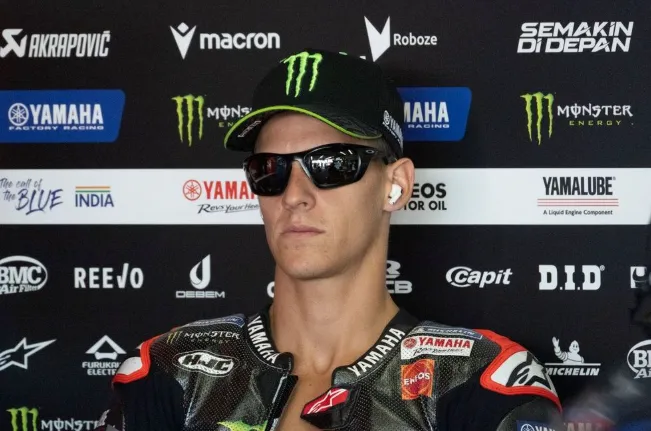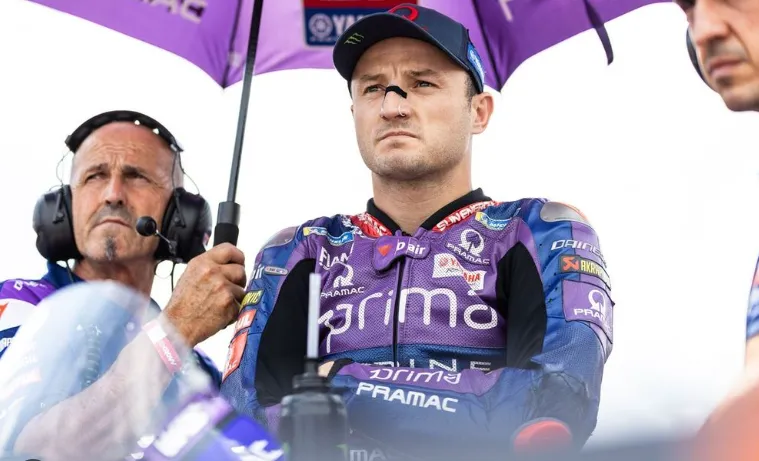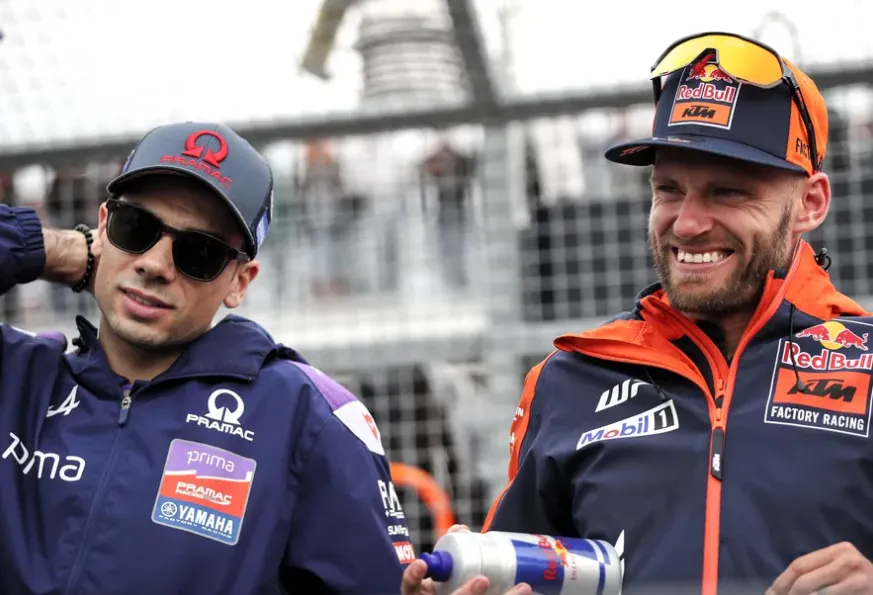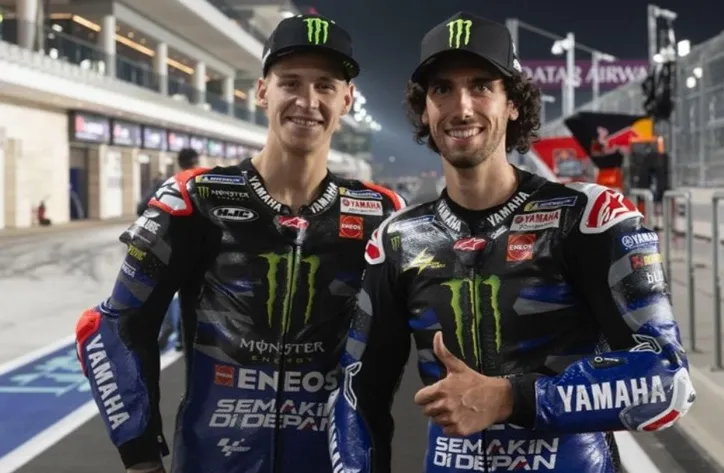

Dropping from P5 to P14 – What is really ruining Fabio Quartararo’s races at Yamaha?
Just two seasons ago, Fabio Quartararo was battling for the MotoGP World Championship. Fast forward to today, and the Frenchman has slipped to P14 in the standings—an unthinkable fall for a former titleholder. While his talent remains unquestioned, it’s clear that something deeper is undermining his performance at Yamaha. So, what exactly is killing Quartararo’s race pace and race day confidence?
The answer is a combination of technical limitations, unstable development, and a bike concept that has not evolved to meet the demands of the modern MotoGP grid.
The Rear Grip Crisis
Time and time again, Fabio Quartararo has pointed out one crucial flaw: rear-end grip. While Yamaha’s YZR-M1 remains strong on corner entry and under braking thanks to its stable front end, the lack of rear traction continues to be the root cause of his struggles.
Quartararo has emphasized that the bike performs relatively well in qualifying or in the first few laps of the race, but the lack of consistent grip on corner exit makes it nearly impossible to overtake or defend positions. He often spins the rear tire aggressively on exit, losing valuable tenths per lap and putting more stress on the tire than his rivals on Ducatis or Aprilias.
This recurring issue has turned race strategy into survival. Even when starting near the front, Fabio has dropped back—sliding through the order as the rear tire fades and he becomes an easy target on acceleration zones.

A Front-End Bias That’s Become a Trap
Yamaha’s technical philosophy has traditionally centered around a strong front end and linear cornering ability. That worked in the past when fewer manufacturers had effective all-around bikes. But in the current grid, where Ducati, KTM, and Aprilia combine power, traction, and balance, Yamaha’s one-dimensional strength is being exposed.
Fabio has even gone as far as to say that the strong front end is now almost a disadvantage, because it masks the rear’s inability to contribute under braking and acceleration. He needs a bike that helps him both in and out of the corner, not just one that initiates the turn well.
This imbalance causes a see-saw effect: the more Yamaha tries to enhance the rear, the more it destabilizes the front, and vice versa. It’s a technical dilemma the factory has not yet solved, and it’s costing Quartararo crucial points every weekend.
Development Confusion and Setup Overload
One of the major frustrations for Quartararo in 2025 has been Yamaha’s approach to development. While Ducati has refined its machine into a balanced monster and Aprilia focuses on cohesive race packages, Yamaha has been accused of being too reactive and experimental.
During recent weekends, Quartararo has revealed that his team tested up to 20 different setup variations, making it nearly impossible to gather consistent data. Instead of building confidence, the constant changes have left him feeling lost.
This scattershot approach to problem-solving creates a moving target. Quartararo and his crew can’t build rhythm, trust the bike, or develop long-term race pace strategies. In essence, Yamaha has created a feedback loop of instability, and the rider is the one paying the price on Sundays.
Engine Characteristics: Power Without Usability
Another major issue is Yamaha’s engine development. While they’ve added horsepower to close the gap to Ducati on the straights, the power delivery hasn’t been optimized for race usability. Quartararo has voiced his concerns for several seasons, asking for more usable torque on corner exit, rather than outright top speed.
Unfortunately, Yamaha’s current configuration makes it difficult for Fabio to deploy that power effectively. Without enough rear grip to stabilize the bike under acceleration, he can’t use the power the engine is producing. The result is wasted energy, spinning rear wheels, and slower exits off critical corners—especially compared to the balanced torque curves of Ducati’s Desmosedici.
This issue is even more frustrating considering that Yamaha is now faster on the straight than in previous years. The bike has power, but Quartararo can’t use it. It’s like having a Ferrari with no traction control on a wet track.
The Psychological Toll of Falling Behind
There’s also the mental and emotional toll of being a champion who’s now struggling for top-10 finishes. Quartararo has always been a rider who thrives on momentum. When he feels good with the bike, he’s aggressive, clinical, and fearless.
But recently, he’s looked more like a frustrated tester than a race-winning threat. At press conferences and interviews, his tone has shifted from hopeful to exhausted. He’s openly admitted he feels like he’s been repeating the same criticisms since 2020, and little has changed in Yamaha’s response.
This psychological drain impacts focus and risk-taking on the track. When a rider lacks belief in their equipment, hesitation creeps in—leading to second-guessing during overtakes, braking zones, and tire management. For a split-second decision sport like MotoGP, that’s fatal.
From P5 to P14: The Numbers Paint a Bleak Picture
The results across the first half of the 2025 season highlight the decline:
-
In Qatar, he started strong but faded to P8
-
In Argentina, he struggled with grip and finished P14
-
In the Americas, he managed P10 but was over 18 seconds off the leader
-
In Thailand, he fought the front pressure and low traction to a finish outside the points
-
At Mugello, a complete collapse in tire performance saw him finish well down the order
These are not the results of a rider losing speed—they are symptoms of a machine falling behind.
The Competition Keeps Getting Better
While Yamaha is stuck in development limbo, Ducati, KTM, and Aprilia continue to improve. Ducati has nearly perfected its machine, offering multiple riders a chance to win any weekend. KTM is now matching them in terms of innovation and speed, while Aprilia’s consistency has dramatically improved.
That leaves Yamaha as the only factory team seemingly going backward. Their inability to offer Quartararo a complete package makes them less competitive not only in races, but also in the rider market. If Quartararo chooses to walk away when his contract ends, it will be the result of years of frustration—not lack of effort.

What Needs to Change
To help Fabio Quartararo and prevent a complete fall from grace, Yamaha must urgently take the following steps:
1. Stop the setup chaos: Focus on a core chassis configuration and build around it. Let Quartararo ride, not experiment.
2. Balance the bike front-to-rear: The obsession with a strong front end must be moderated. Real lap time comes from rear traction and acceleration.
3. Refine engine delivery: Shift focus from peak horsepower to torque and usability in mid-corner exits.
4. Restore rider confidence: Back Quartararo fully and take his feedback seriously. He’s not just a rider—he’s the factory’s best development asset.
5. Match the rivals in aero and rear ride-height tech: Yamaha’s competitors are evolving with new technologies that Yamaha needs to match if they want to compete in 2026.
Conclusion: Talent Is Not the Problem—The Package Is
Fabio Quartararo’s slide from P5 to P14 is not a mystery anymore. The problem is clear, and it lies in the motorcycle and Yamaha’s approach to solving its flaws. He remains one of the most talented riders on the grid, but he’s being dragged down by a machine that no longer matches his skillset or ambition.
Until Yamaha steps up with a coherent development strategy and gives Fabio a balanced, race-worthy machine, we’ll continue to see headlines about his struggles—not his success. The clock is ticking, and so is his patience.


















